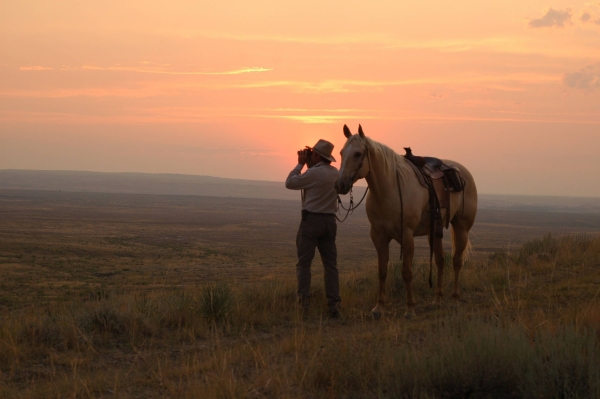
Approximately 36 miles of perimeter levees are open to horseback riding. Horseback riders will be sharing multi-use trails with hikers, bicyclists, pet walkers, vehicles, and other horseback riders. Horseback riders must yield to vehicular traffic. Trails are flat with gravel and shell-rock levees.
Rules and policies:
- Horseback riding is permitted on the L-40 and L-39 sections of the perimeter levees, terminating south of the S-6 and S-362 structures.
- Parking is available to access the perimeter levee from the Headquarters Area entrance at the Lee Road boat ramp or from the Hillsboro Area entrance at the Loxahatchee Road boat ramp.
- Horses are required to wear manure containment bags and riders are responsible for removal of all horse manure from the refuge.
- Clearing of vegetation is prohibited.
- Each visitor may only ride/walk one horse on the refuge at a time and all horses must have a rider.
- Groups consisting of more than five horses will require a Special Use Permit (General Activities - Special Use Permit Application, FWS Form 3-1383-G)
- Areas of the refuge may be restricted seasonally to avoid disturbance of breeding or nesting wildlife or to protect sensitive habitat.
Why does my horse have to wear a manure containment bag?
To Help Protect the Everglades. This regulation is in place to protect the wildlife and natural resources that you have come to see and enjoy. Horse manure can spread seeds from invasive species invasive species
An invasive species is any plant or animal that has spread or been introduced into a new area where they are, or could, cause harm to the environment, economy, or human, animal, or plant health. Their unwelcome presence can destroy ecosystems and cost millions of dollars.
Learn more about invasive species and other plants that do not naturally occur on the refuge. Horse manure will also eventually make it into the wetlands, which negatively impacts water quality.
To Respect Your Fellow Visitor. No one wants to see, smell, step in, or ride through horse manure on the trails.
Remember: National wildlife refuges are places where wildlife comes first. Help protect wildlife and their homes by respecting refuge rules and regulations. If a high number of reports of negative horse interactions are reported, the refuge may restrict or eliminate horseback riding.
